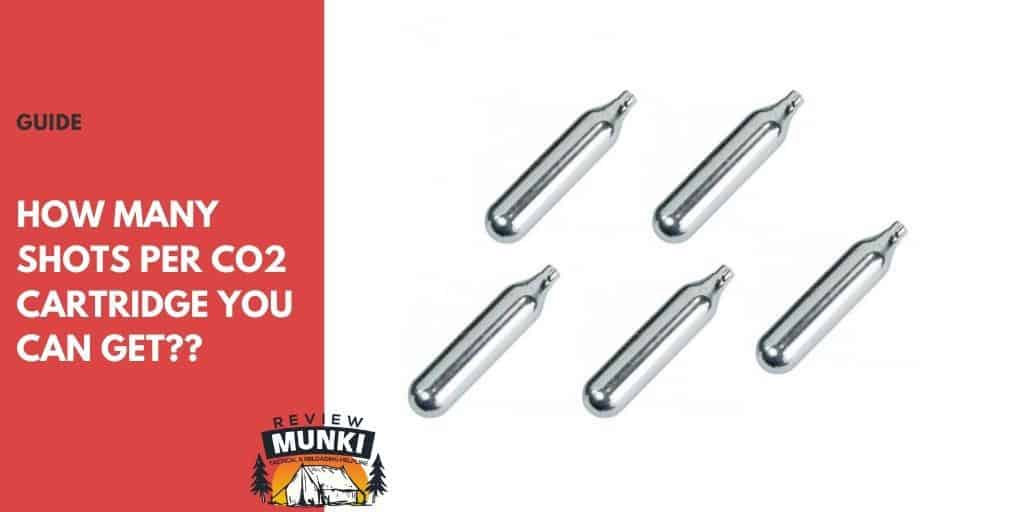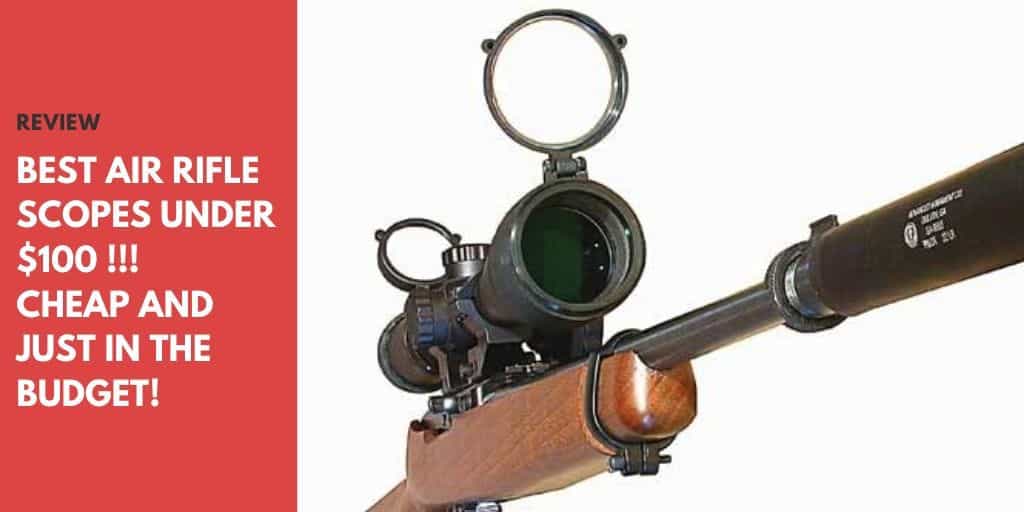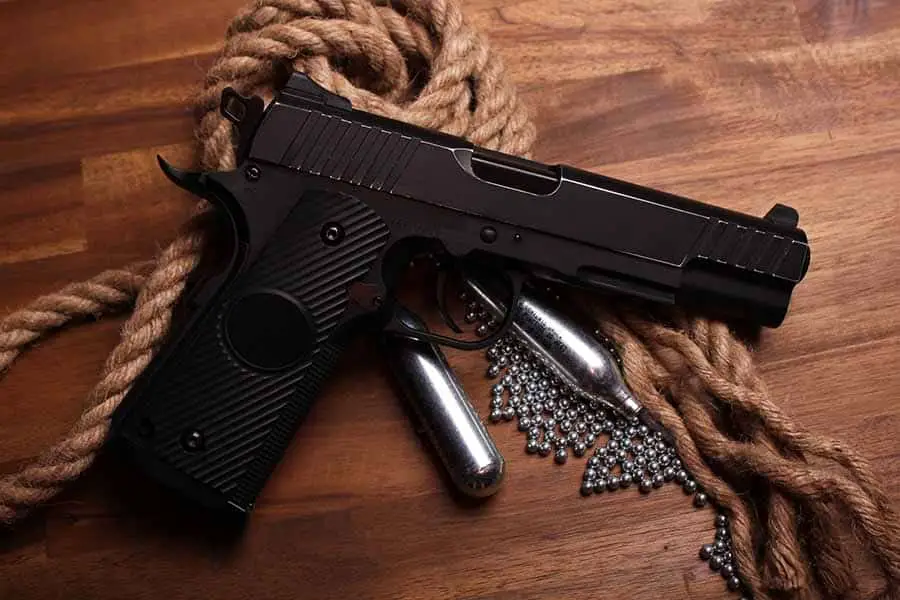When we have a pesky predator lurking around at night and want to go hunting coyotes with air guns quietly, the air gun market has us covered.
Most people do not believe an air gun can take care of a medium-size predator like a coyote. Air guns have evolved and now achieve impressive feet per second (FPS) velocities in a range of calibers.
Any hunter, or would-be hunter, who scoffs at the air gun idea might want to get a second opinion for those times when a quiet shot is an advantage.

Will an Air Gun Take Down a Coyote?
Until recently, after an encounter that left several chickens dead, I found myself wondering, can you hunt a coyote with an air gun? I needed to hunt at night, and too many neighbors lived within earshot of a conventional rifle. I needed a stealth gun.
The answer is, yes, a good air rifle possesses all the power necessary to kill a coyote within a reasonable range and with the right caliber.
Finding the best gun for the job takes some shopping around and research. There are enough choices to suit most needs. There are even some heavier options that can take down a boar.
What Caliber Should You Use
The right caliber is a choice between the size of the coyote and a personal choice regarding what effect the caliber should have.
The most common calibers are .177 and .22 Cal. However, small calibers are not the only ones available. To step up in range and power, .25, .30, .303, 9mm, .357, .40, .45, and .50 calibers are available in a range of FPS.
Knowing that, with the knowledge that a coyote is our prey, let’s draw a line in the sand. Starting with the .30 Cal., a decently placed shot should take out a coyote quickly and humanely. With .177 or .22 Cal., the FPS has to be very high to have a chance at a quick kill, and the shot placement has to be very precise.
Not to say that a coyote is too big for a small-caliber round, but .177 and .22 calibers are not suitable to take down a coyote quickly and humanely. Most people prefer to get rid of a pest without causing unnecessary suffering.
The last consideration is the FPS. For the most part, manufacturers have taken care of the power through quality R & D, but I recommend researching the caliber and energy delivered together. Read reviews and jump on the chance to take some test shots, if possible.

Best Range for an Air Gun
After making a decision, the next question arises: what would be the effective/ethical range to shoot a coyote with an air gun?
Getting range right will be a challenge because coyotes are skittish and attentive. The range, rifle FPS, pellet weight, and caliber also play a role. With that said, less than 50 yards is generally the range of choice.
A larger caliber with more power can reach out more, but accuracy might become a problem.
With smaller calibers, I always try to let the coyote get as close as I think it is going to get before lining up a shot. Small caliber rifles need all the help they can get, including the best accuracy possible for an ethical kill.
Which Type of Air Rifle Is Best for Coyotes?
The question is, is there a specific type of air rifle you should use? I think the answer is no. The specific type only becomes a serious question when talking about calibers and effective range versus animal type and size.
There is a clear type of rifle to avoid, any rifle that lacks the power to give an adequate FPS for its caliber. Small calibers attain more stopping power with a higher FPS. Large calibers need enough FPS to get downrange with accuracy and power.
Another measure, similar to FPS, is FPE (foot-pounds of energy). The gap between FPS and FPE is an important distinction. With FPS, an ultra-light round can travel at a rate of 1200 and have limited stopping power due to weight.
FPE can calculate the energy of a heavier round. If enough energy exists to stop an animal, the speed (FPS) is irrelevant. For example, a .30 caliber round suitable for taking out a coyote has an FPE of 50. To calculate FPE, we need the FPS and the weight of our pellet in grains.
For the average shooter who goes plinking or a small game hunter, access to a Chronometer might not exist. However, with pellets of different weights on the market, FPS varies, and a measuring instrument is the only way to be sure.
When searching for the best rifle, my advice is to look at the FPS of the desired caliber. A .30 Cal. suits coyote hunting. Next, assume the manufacturer calculated the FPS with the lightest pellet that gave the most FPS for marketing purposes.
With the highest FPS rifle in hand, look for a heavier .30 caliber pellet that delivers stopping power. Chances are, since the FPS of the rifle is high, the heavier grain pellet will have plenty of FPE to stop any coyote that becomes a nuisance.
Fortunately, many online shops provide FPS and FPE, and it is not uncommon to get a description of the rifle’s power, such as putting a hole in a 2×12 of Douglas Fir at 10m to give a mental image.
There are dozens of rifles on the market for most calibers, in a range of prices. The choice comes down to the caliber, specifications, quality, and price. For example, the .30 AirForce TexanSS PCP Big Bore Air Rifle with 140 ft/lbs and 1130 FPS indicates that a pellet shot from this rifle moves fast and has more than enough power necessary to put down a coyote humanely.
What Is the Best FPS for Coyotes?
Once we decide on a caliber, the next question arises: What would be the recommended FPS for shooting/hunting coyotes?
In a lot of cases, there is no best FPS for hunting coyotes. FPE is a better measurement to use because FPS factors into the equation and helps form a better understanding of the power at the end of the muzzle.
FPS is easy to manipulate because a company can boast a super-fast speed from a rifle that undoubtedly possesses a lot of power but shoots a lightweight pellet at the maximum speed the rifle can deliver. The problem is, the light pellet might not be capable of taking out anything that weighs more than a few pounds, certainly not a coyote.
Choosing a pellet and measuring FPE sorts the problem out immediately. A humane coyote kill should happen when shooting a rifle that delivers 50 FPE. If the combination of any air gun and pellet deliver the right foot-pounds to do the job, look no further.
If only FPS is available, go for 1000 FPS and up, which should cover heavier pellets that deliver more of a punch.
When to Hunt Coyotes
When suspicions arise about whether or not coyotes are prowling in the area, a common question is: When is a good time to hunt coyotes with an air gun? Listen for howls and yips at night.
Hearing coyotes at night indicates that nighttime is the best time to hunt. Hunting in the dark tends to add extra equipment and costs to a rifle, but coyotes are cautiously out at night and nowhere in sight during the daytime.
Which Gun to Choose
The short answer to the question of which gun to choose is the gun that suits an individual’s needs. The longer answer is that companies make a few different types of air rifles spread out over hundreds of models.
Pneumatic Air Rifles
These rifles are suitable for children. Stylistically these are the pump-action BB and pellet rifles that are affordable and easy to find.
Spring Powered Air Rifles
The spring delivers more power by delivering compressed air from a chamber, and the rifle is easy to use. Prepare to pay a higher price and spend more time reloading.
CO₂ Powered Air Rifles
CO₂ cartridge powers these air guns, and the complaints are centered around the cartridge running out quickly and suffering from a lack of power.
High-Pressure Air Rifle
These rifles come in a variety of options, and the quality models have a high-pressure cylinder. For higher calibers that need adequate power to propel a heavy pellet, HPA rifles deliver the best results and command high prices.
The Verdict
My pick for someone who only wants to try an air rifle without a hefty price tag is the Seneca Recluse 500cc. The Recluse retails for well under $1,000 and is available from 9mm up to .50 caliber. A 500cc tank gives about 12 shots at full cock, and a half cock option (less power) allows up to 17 shots.
The Recluse has unregulated airflow. The lack of a regulator simplifies repairs in the field, but every burst of air may not have the same power. The lack of a regulator is something to be aware of but does not impact the quality much.







